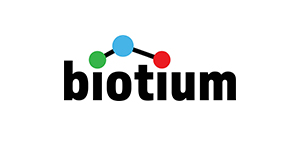PAX6(PAX6/1166), 1mg/mL
PAX6(PAX6/1166), 1mg/mL
Artikelnummer
BTMBNUM1166-50
Verpackungseinheit
50 uL
Hersteller
Biotium
Verfügbarkeit:
wird geladen...
Preis wird geladen...
Description: Pax genes contain paired domains with strong homology to genes in Drosophila, which are involved in programming early development. Lesions in the Pax-6 gene account for most cases of aniridia, a congenital malformation of the eye, chiefly characterized by iris hypoplasia, which can cause blindness. Pax-6 is involved in other anterior segment malformations besides aniridia, such as Peters anomaly, a major error in the embryonic development of the eye with corneal clouding with variable iridolenticulocorneal adhesions. The Pax-6 gene encodes a transcriptional regulator that recognizes target genes through its paired-type DNA-binding domain. The paired domain is composed of two distinct DNA-binding subdomains, the amino-terminal subdomain and the carboxy-terminal subdomain, which bind respective consensus DNA sequences. The human Pax-6 gene produces two alternatively spliced isoforms that have the distinct structure of the paired domain.Primary antibodies are available purified, or with a selection of fluorescent CF® Dyes and other labels. CF® Dyes offer exceptional brightness and photostability. Note: Conjugates of blue fluorescent dyes like CF®405S and CF®405M are not recommended for detecting low abundance targets, because blue dyes have lower fluorescence and can give higher non-specific background than other dye colors.
Conjugate: Purified, BSA-free
Concentration: 1 mg/mL
Storage buffer: PBS, no BSA, no azide
Product Origin: Animal - Mus musculus (mouse)
Clone: PAX6/1166
Entrez Gene ID: 5080
Immunogen: Recombinant fragment (N-terminus; aa 1-300) of human PAX6 protein
Verified AB Applications: IHC (FFPE) (verified)
Z-Antibody Applications: IHC, FFPE (verified)
Conjugate: Purified, BSA-free
Concentration: 1 mg/mL
Storage buffer: PBS, no BSA, no azide
Product Origin: Animal - Mus musculus (mouse)
Clone: PAX6/1166
Entrez Gene ID: 5080
Immunogen: Recombinant fragment (N-terminus; aa 1-300) of human PAX6 protein
Verified AB Applications: IHC (FFPE) (verified)
Z-Antibody Applications: IHC, FFPE (verified)
| Artikelnummer | BTMBNUM1166-50 |
|---|---|
| Hersteller | Biotium |
| Hersteller Artikelnummer | BNUM1166-50 |
| Green Labware | Nein |
| Verpackungseinheit | 50 uL |
| Mengeneinheit | STK |
| Reaktivität | Human |
| Klonalität | Monoclonal |
| Methode | Immunohistochemistry |
| Isotyp | IgG1 kappa |
| Wirt | Mouse |
| Produktinformation (PDF) | Download |
| MSDS (PDF) | Download |

 English
English







